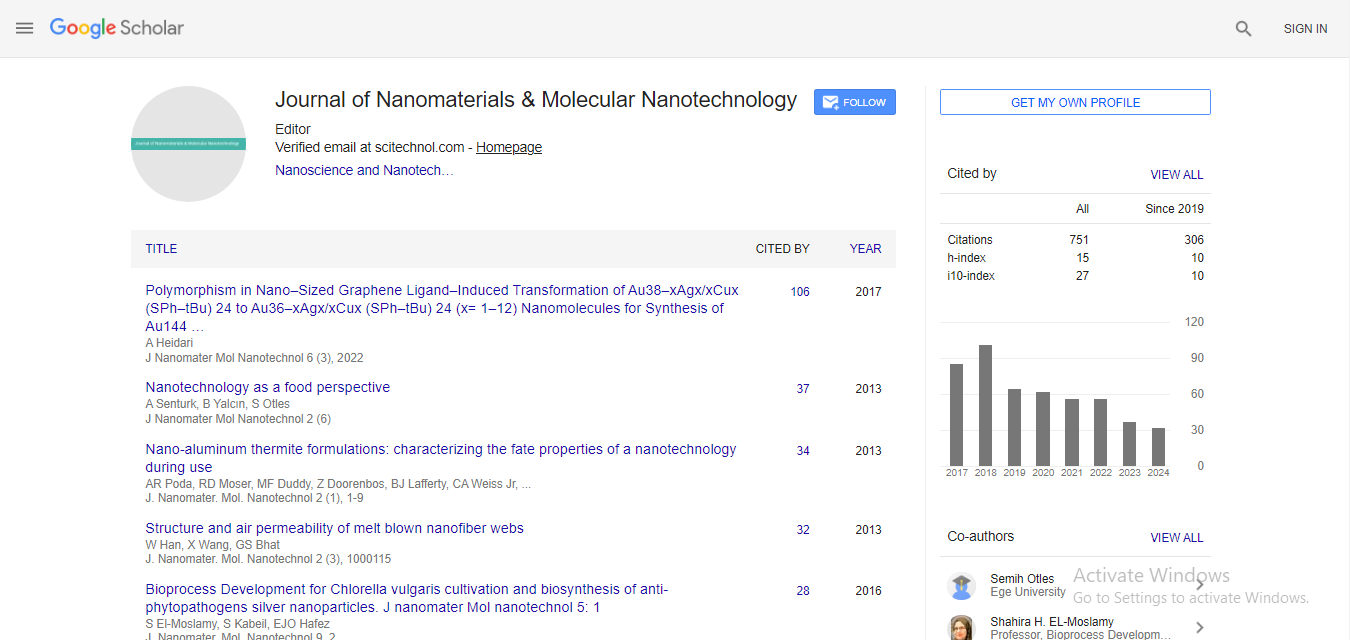Isoniazid-oleanolic acid co-crystal system: Synthesis, anti-TB and toxicological effect on the human embryonic kidney (HEK293) and human hepatocellular carcinoma (HepG2) cell lines
Victor O Fadipe, Mohammed S Haruna and Andrew R Opoku
Federal Ministry of Science and Technology, Nigeria
University of Zululand, South Africa
National Agency for Science & Engineering Infrastructure, Nigeria
: J Nanomater Mol Nanotechnol
Abstract
Tuberculosis (TB) is highly endemic disease worldwide. One of the commonly used first line drugs for anti-TB therapy (ATT) is isoniazid (INH). Isoniazid is known to be majorly metabolized and detoxified in liver by both phases I and phase II group of drug metabolizing enzymes. The drug and along with its metabolite are toxic and during its assimilation process cause injury to liver. The work presented here involves investigation of co-crystals involving isoniazid and oleanolic acid. A 1:1 co-crystal involving isoniazid, a foremost first-line drugs recommended by the World Health Organisation for the treatment of tuberculosis, which causes damage to the liver and Oleanolic acid, a hepatotoxicity naturally occurring compound, have been synthesized for the first time. Considering drug combination perspective, this is an interesting pharmaceutical co-crystal because of the known side effect of isoniazid therapy which might be improved upon by the presence of the oleanolic acid. The co-crystal compound was characterized using PXRD, TGA and SEM which were further evaluated for in vitro anti-TB and cytotoxicity index, using Human Embryonic Kidney (HEK 293) and Human Hepatocellular carcinoma (HepG2) cells. The PXRD of the synthesized co-crystal compound maintained crystalline nature like isoniazid for the three methods, TGA for all the three methods have cleavage values from 2200 C- 360O C, and the SEM images obtained from the three synthetic methods appears rod-like in nature. The co-crystal of OA with INH, increased the anti-TB MIC values for the three synthetic methods used as follows(a) Solvent evaporation(1.06μM) ;(b) Solvent drop (0.50μM) ;(c) Direct grinding (0.61 μM). The cytotoxicity tests of the co-crystal system on the two-human cell lines (HEK 293 and HepG2) were found to be IC50 ≥ 300ug/ml. The finding of the current work is that, co-crystal compound of OA with INH is probable and could be utilized to design better treatment for tuberculosis disease, which can further be extended to the treatment of HIV/TB coinfection.
Biography
Victor O Fadipe holds a PhD degree in Chemistry (Organic/Natural Product) from University of Zululand, South Africa. He is presently Principal Research Fellow /Assistant Director, Federal Ministry of Science and Technology, Abuja, Nigeria. He has several research publications in chemistry of natural product for the treatment of TB. His research interest is in the bio-prospecting for drug lead candidates from natural products (plant and animal) for management & treatment TB and repositioning of existing drugs for infectious diseases. He is a member of several learned society in chemistry.
E-mail: vobfadipe@yahoo.com
 Spanish
Spanish  Chinese
Chinese  Russian
Russian  German
German  French
French  Japanese
Japanese  Portuguese
Portuguese  Hindi
Hindi 



